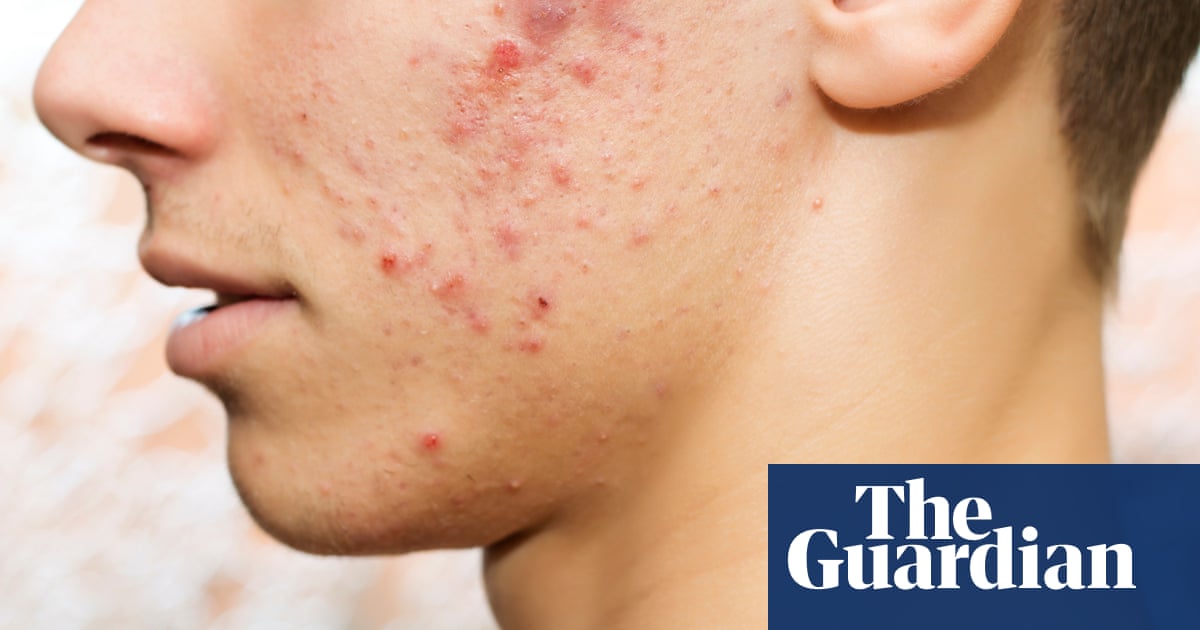Acne rates in UK adolescents and young adults among highest in the world

The number of children and young people experiencing acne is increasing worldwide, according to a study that shows rates in the UK are among the highest globally.
Acne rates among adolescents and young adults have risen in nearly all countries since the 1990s, researchers found. The increase could be linked to lifestyle factors including diet, stress and obesity, wider exposure to air pollution, or more people coming forward for help, the team concluded.
Globally, the age-standardised prevalence rate of acne among people aged 10 to 24 increased from 8,563.4 per 100,000 people in 1990 to 9,790.5 per 100,000 population in 2021.
The UK was among the 10 countries with the highest prevalence of acne diagnosed among adolescents and young people in 2021.
About 14.65% of adolescents and young people were diagnosed with acne in the UK, according to the study published in the British Journal of Dermatology.
This was a rise from 13.57% in 1990, according to the study, which looked at data on diagnosis rates across 204 countries.
The British Association of Dermatologists (BAD) said the rise in cases could be attributed to lifestyle or environmental factors, or down to the fact that people were quicker to see a healthcare professional about their acne.
It added that the true number of adolescents with acne in the UK was actually likely to be closer to 95% when accounting for people who self-managed their treatment.
The new review showed that prevalence in 2021 was highest in Germany, where almost 15.98% of teenagers and young adults were diagnosed.
Researchers said rates of acne had been on the rise in all countries, except New Zealand.
The UK ranked eighth among the countries with the highest prevalence, behind Germany, Portugal, Luxembourg, Norway, Andorra, Denmark and San Marino.
Dr Zhou Zhu, the lead author of the research from Peking Union Medical College Hospital, said: “Acne rates among adolescents and young adults have gradually increased in nearly all countries since the 1990s.
“Our research didn’t look at why this is, but it could be linked to lifestyle factors like diet, stress, obesity rates, increased exposure to pollution from urbanisation, or simply a greater likelihood of seeking treatment.
“It is plausible that, as healthcare becomes more accessible in countries, reported acne rates increase. This is unlikely to be the only factor though, as even in countries with good access to healthcare, cases have increased.
after newsletter promotion
“We only looked at healthcare data, which would not include the many people who have acne but are managing the conditions themselves, so overall acne rates are actually higher.”
Prof Michael Ardern-Jones, the academic vice-president of the BAD, said the study provided more evidence that the number of acne cases seen by doctors was increasing.
“While many people manage acne themselves using over-the-counter treatments, it is also a common reason for seeing a GP or a dermatologist.
“Acne is a common condition, but it can be severe. Friends and family have an important role to play, as do health professionals in providing emotional support, as it can have a negative impact on mental health, especially for teenagers.
“As well as the psychological impact of untreated acne, some people suffer permanent scars. However, there are treatments to limit the impact of the condition.
“Ideally, this means ensuring they have access to medical advice and acting fast to treat those where it is becoming severe, to prevent scarring.”
Acne ranges from a few spots on the face, neck, back and chest, to a more severe problem with solid painful lumps or cysts under the skin.
Related
Newspaper headlines: ‘Putin’s dirty work in UK’ and ‘Honeytrap spies’
The Times focuses, external on Donald Trump's latest comments about the war in Ukraine. Its headline quotes the US president, who said Vladimir Putin was "doing
‘This could end in World War Three,’ warns Trump as…
7 March 2025, 17:31 | Updated: 7 March 2025, 18:06 'This could end in Worl
Met Office ‘polar vortex’ update as temperatures to plummet
The weather is expected to quickly change after a spell of sunshineThe Met Office has warned that "colder weather is on the way."(Image: Liverpool ECHO)It is fo
British Pie Awards 2025: Naan better as kebab pie wins…
The Turkish-tinged creation by Boghall Butchers - which is celebrating its 50th year in business - won through in the newly-formed fusion category, which also f













